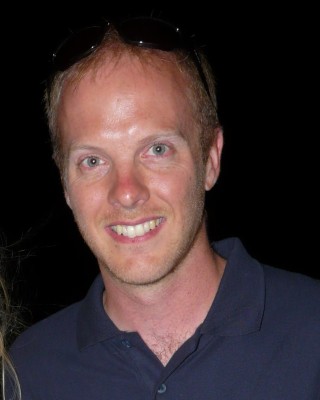It Takes a Village to Start a Research Cruise
(or “A Light-hearted look at the Voyage to the Vents”)
Boarded the ship on Friday, left the port of Suva on Sunday, and arrived at Niua Volcano to start our work Tuesday morning… That’s four days! Plenty of time for waiting around, relaxing, working on our tans, enjoying the Suva nightlife, eating fresh coconut, talking about our feelings and generally contemplating the meaning of life while staring at the endless horizon before the work actually begins. Life is good.
Except…
Nope. Not at all. Negatory. Not even close.
Everybody – crew, scientists, ROV personnel – have been working long hours since arriving in Fiji to prepare all of our equipment so we are ready to dive as soon as we arrive in the working area. Although some equipment permanently resides on the Falkor, most of it has been brought onboard specifically for the work that will be done on this cruise. Labs must be set up, computer equipment has to be integrated into the ship’s matrix network system, and everything must be tested. Four days, it turns out, doesn’t leave much time for talking about our feelings (good thing scientists and engineers don’t have any…).
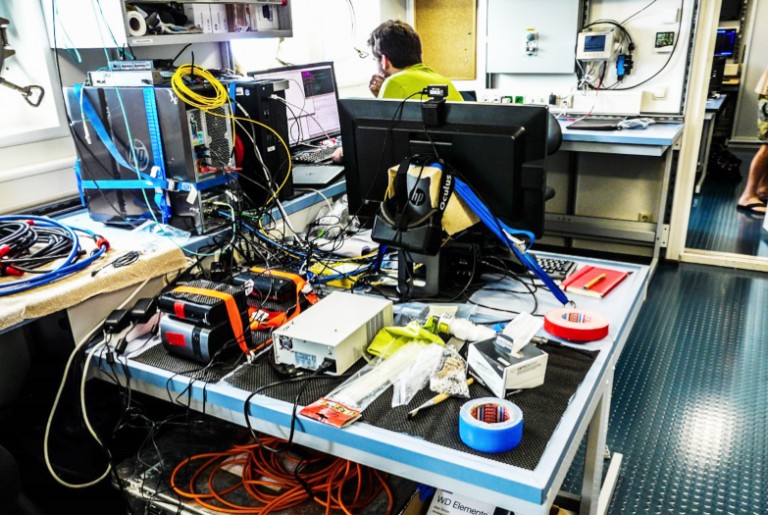
For example, the workbenches in the Dry Lab (above) were completely empty when we arrived. Every one of the wires you see will plug into some electronic computer gizmo thingy (technical term); sometimes I think Kevin, seated in the background, brings several computers and boxes with blinky lights so he can look smarter and more important than the rest of us. I really have no idea what any of this stuff does, but Kevin assures me it is all very expensive.
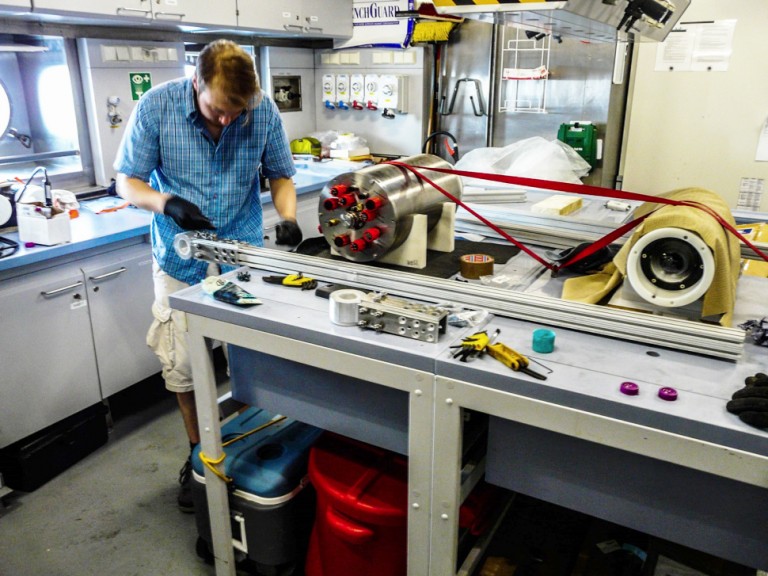
Above is Tom, our chief scientist, actually building the camera system for the ROV while on the transit to the volcano. Most normal scientists take years designing, building and testing something as complex as Tom’s camera systems. But not Tom… I’m pretty sure he dreamt up this contraption last night after leaving port, and had it built by morning. I have no idea where he got his materials from. I suspect he’s slowly disassembling the entire ship, piece by piece, and turning it into one gigantic underwater super-camera.
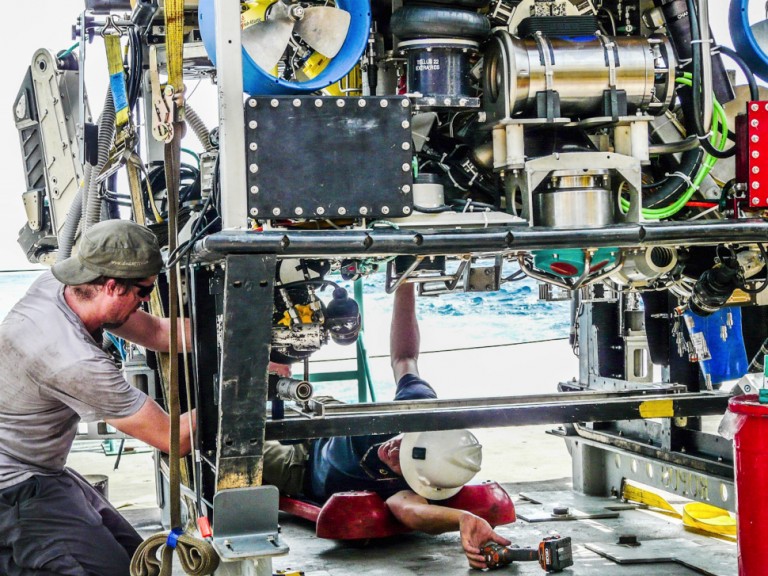
Here, the ROPOS guys are busy taking the ROV apart, or putting it back together… I can’t really tell. In fact, I’m pretty sure all they’ve been doing for the past 4 days is taking it apart and putting it back together, just for fun, because they are CONSTANTLY crawling around it, poking, prodding. They’re like that uncle that bought an old ’57 Chevy, and spends every weekend taking the engine apart, and putting it back together, but hasn’t actually driven the car anywhere. Ever.
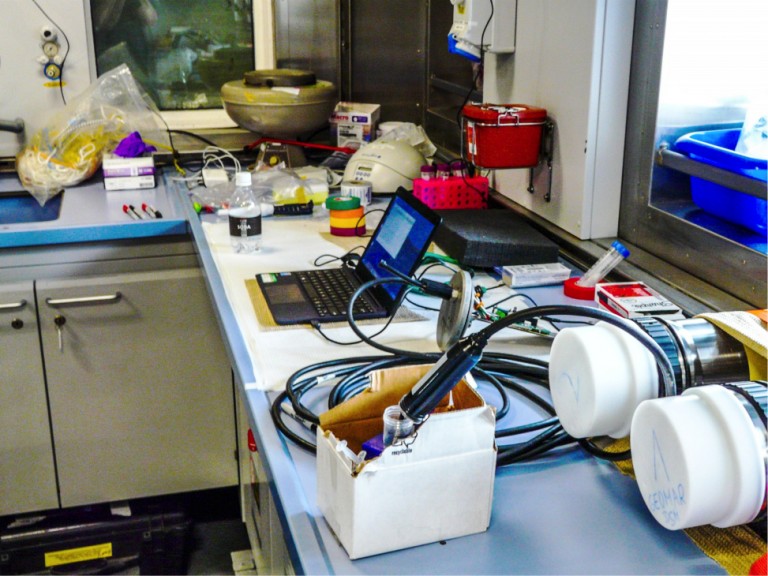
Not to be outdone, Amy, our resident fluid chemist, decided to bring her entire laboratory with her and has been busy spreading out all sorts of mad-scientist-looking contraptions and test tubes on the counters in the wet lab. Not only that, the shipment of some of her chemical sensors got delayed and didn’t quite make it to Suva in time, so she decided to fabricate replacement components out of whatever material she could get her hands on last minute before leaving Suva, including constructing a silver electrode out of hoop earrings bought at a local jewelry shop (This is perhaps the only section of the blog that is completely serious – I’m not kidding!). I’d still be crying on the dock because my gear hadn’t arrived yet…
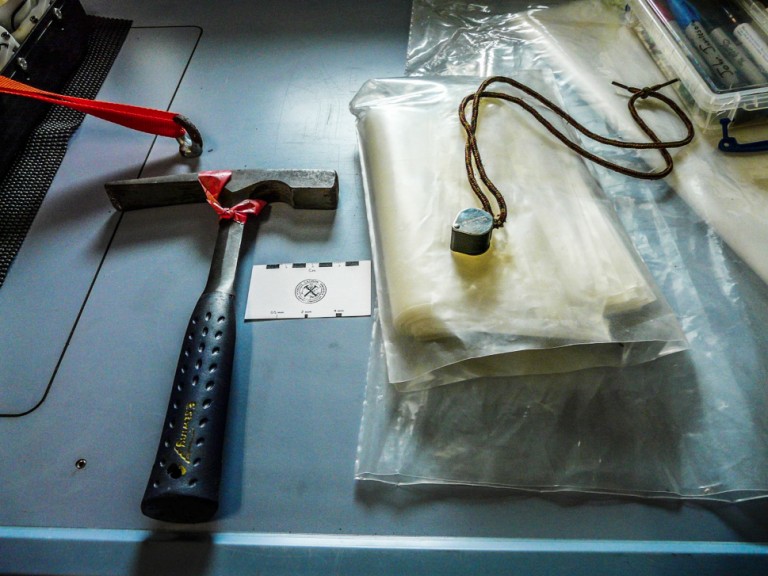
In the end, it is the geologists that are – by far – the coolest people on the boat. As you can see below, it took us about 3 seconds to set up our analytical equipment (rock hammer, hand lens, sample bags and scale card). We don’t need no fancy pants computers/wires/centrifuges/test tubes to prove our scientific mettle. We kick it old school on the ship, and leave the analytical work for our rock samples for the comfort of our labs back on dry land. That gives us much more time to contemplate the meaning of life. Or at least be first in line at mealtime.
